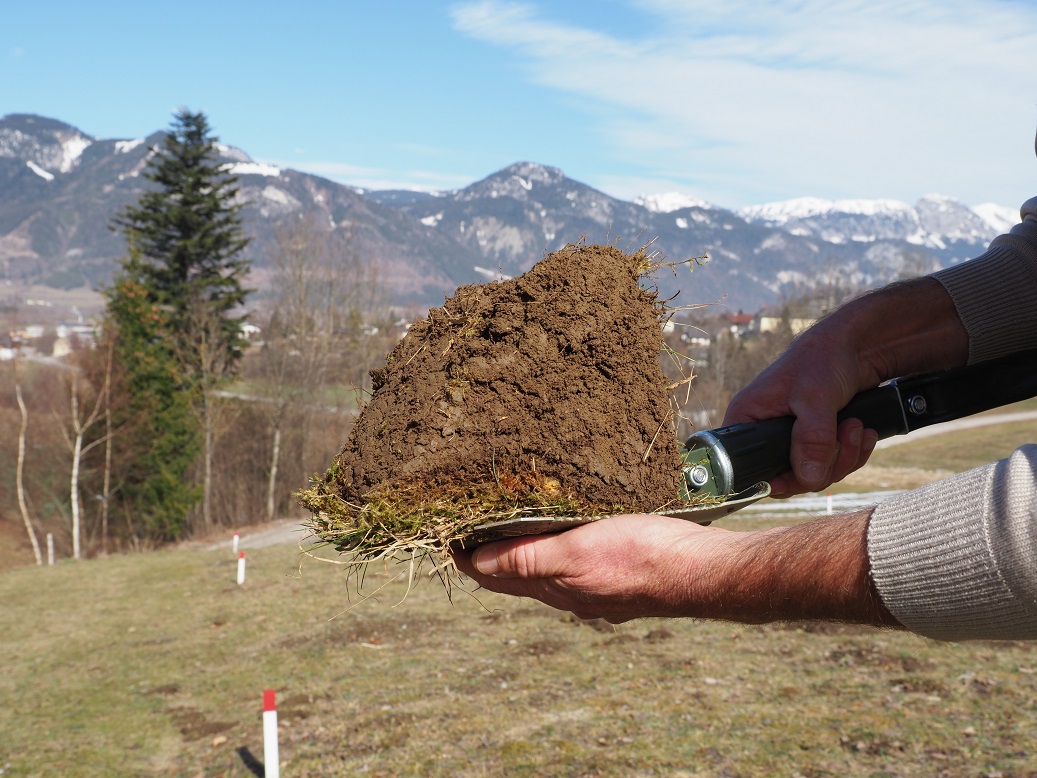Life cycle assessment
Individual farm life cycle assessment is an instrument to demonstrate the potential environmental impacts of agricultural businesses and their products. The results of an individual farm life cycle assessment can make a significant contribution to the orientation of the agricultural business in terms of quality leadership in production and marketing, as well as accompany and support measures regarding climate protection and the sustainable use of resources. The life cycle assessment tool FarmLife (www.farmlife.at), which was developed in collaboration between HBLFA Raumberg-Gumpenstein and Agroscope, provides systematic strategies for these goals and combines research, advice and practice. The methods and applications contained in the tool can be used for both organic and conventional farming operations and, as a comprehensive analysis tool, contribute to optimizing ecological and economic efficiency in agriculture.
Soil water balance in grassland
Quantifying the effects of water balance variables such as precipitation, evaporation and seepage on yield and vegetation dynamics in grassland is valuable and important, especially in view of increasingly extreme weather events. Grassland is one of the crops with the greatest water requirement. Every day, grassland needs around 2.5 l/m² of water to grow, which results in around 700 liters per kilo of dry matter. Based on the available long-term data series on soil water balance variables from lysimeters, year-to-year fluctuations and extreme values can be analyzed and recommendations can be drawn up on water requirements, stock management and use in grassland. Such data is also important beyond the study area, as a basis for adaptation strategies to drought, and not just for agriculture.
grassland soil
The root mass is particularly high in grassland soil. More than three quarters of the plant roots are in the top 10 cm of soil. Dead roots, root parts and mycorrhizal hyphae as well as root exudates from living plant roots are important humus formers. Therefore, grassland soils are usually very rich in humus. The humus content in the topsoil is often more than six percent. In particular, grassland soils influenced by groundwater (gley, bog, moor) are extremely rich in humus. In fertile grassland soils, the carbon:nitrogen ratio is lower than 12:1. The optimal pH value in the main root zone of grassland soils should be between 5.0 and 6.2. In this pH range, mineral nutrients for grassland plants are optimal and available in a balanced ratio. A crumbly structure in the topsoil is favorable because the absorption, storage and percolation of water as well as aeration and root penetration are optimal. The mineralogical composition of the soil-forming parent rock has a major influence on the soil-borne nutrient supply capacity of a grassland soil. This is why soils made from rock rich in quartz (e.g. sandstone, quartzite) are naturally poor in nutrients. Soils made from rock rich in mica and/or feldspar (e.g. granite, gneiss, mica schist), on the other hand, have a high natural potassium supply capacity. Soils made from carbonate rock (e.g. lime, dolomite, marl) contain a lot of calcium and magnesium.
{rsfiles path="Research Reports/Environmental Resources_im_Gruenland/Naehrstoffe/images/root/2_2006_Grassland_science_in_europe_Bohner.pdf"}
This might also interest you









